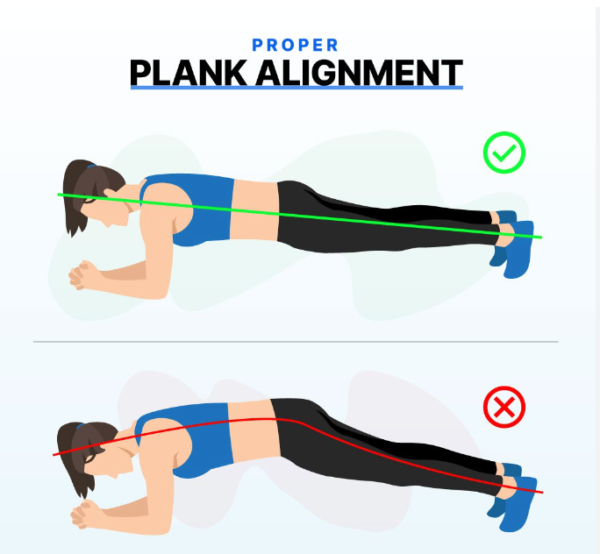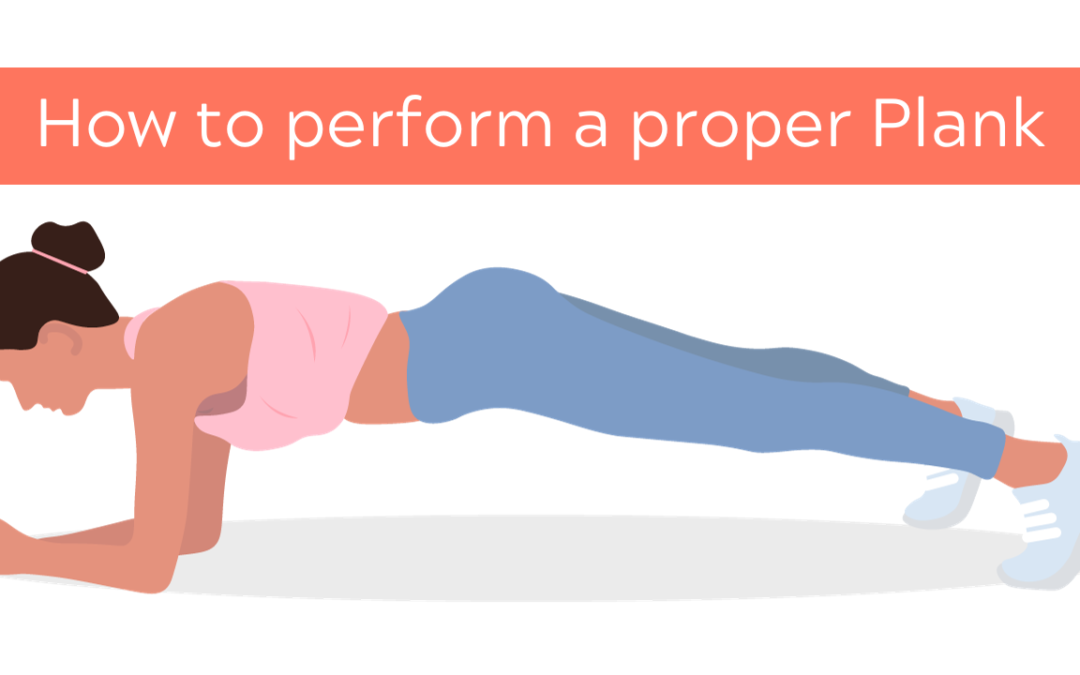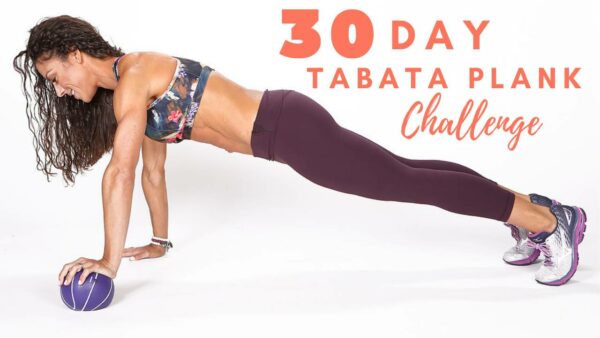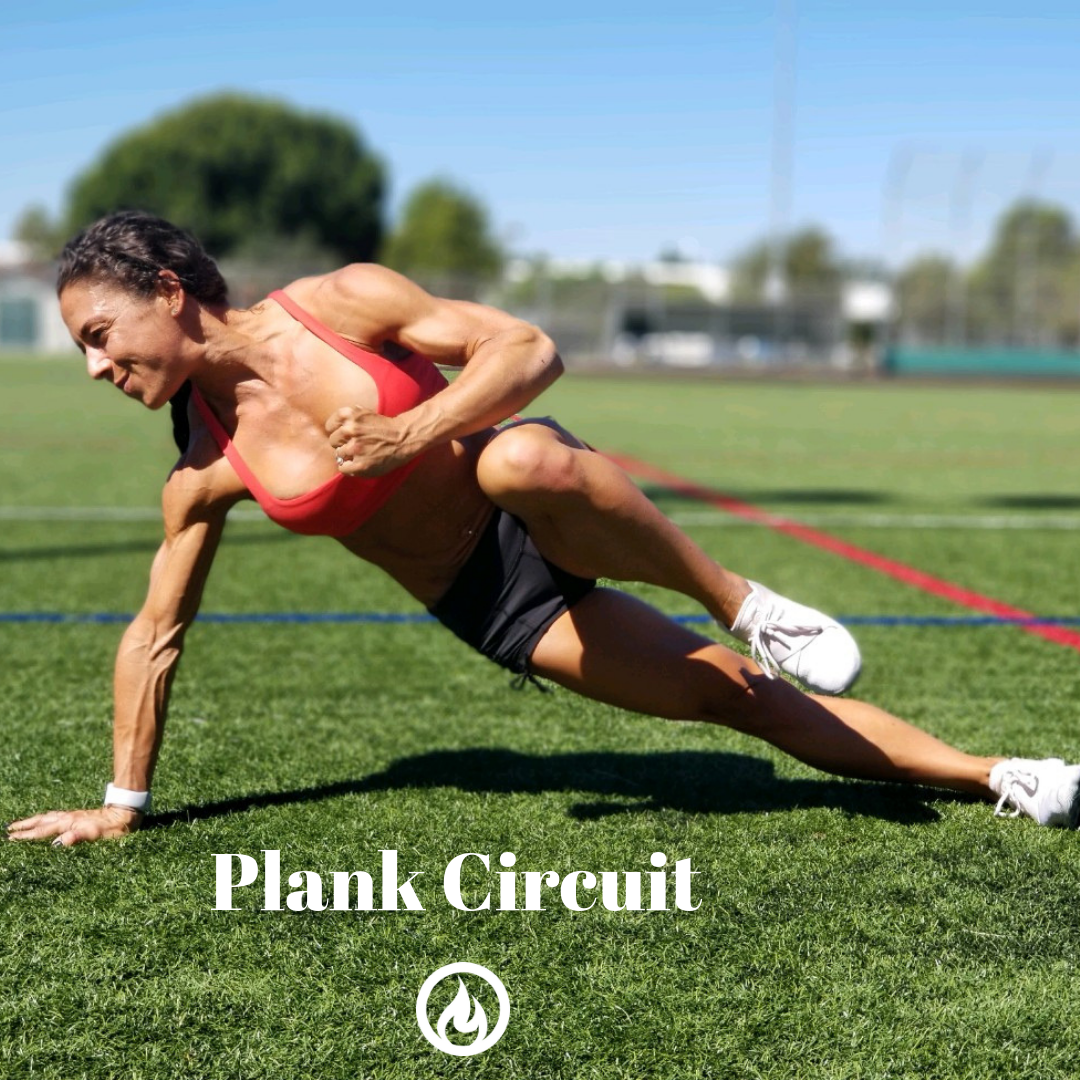A plank is an effective core-strengthening exercise, if done properly! If you can master your plank, just like the squat, it can be one of your GO TO exercises for targeting the entire body. Let’s talk about proper form so you can get the most out of your planks.
1. Starting Position:
(hand plank- targets more shoulders)
- Begin by getting into a push-up position. Place your hands directly under your shoulders, slightly wider than shoulder-width apart.
- Keep your fingers spread apart for stability.
- Extend your legs straight, with your toes on the ground.
- Your body should form a straight line from head to heels.
Starting Position:
(forearm plank- targets more core)
- Begin by getting into a push-up position then drop down to your forearms, directly under your shoulders, shoulder-width apart. Hands spread apart or forming fists.
- Extend your legs straight, with your toes on the ground.
- Your body should form a straight line from head to heels, body parallel to the ground.
2. Engage Your Core:
- Tighten your abdominal muscles (engage your core) by pulling your navel toward your spine.
- Squeeze your glutes (buttocks) to keep your hips level with your shoulders, without a dip in your back.
3. Maintain Proper Alignment:
- Ensure that your neck is in line with your spine; avoid looking up or down. Your gaze should be focused on the floor a few inches in front of your hands.
- Keep your shoulders away from your ears, and your elbows should be at a 90-degree angle.

4. Hold the Plank:
- Hold the plank position for as long as you can while maintaining proper form. Start with 10-20 seconds if you’re a beginner and gradually increase the time as your strength improves. The Tabata Plank Challenge is PERFECT for that 20 second plank hold with a 10 second recovery. It is a challenge but one that is doable and achievable.
- It’s important to focus on maintaining good form rather than holding for an extended period. Quality is more important than quantity.
5. Breathe:
- Breathe evenly and deeply throughout the plank. Avoid holding your breath.
6. Gradually Increase Difficulty:
-
- As you become more comfortable with the standard plank, you can increase the difficulty by trying variations like side planks, forearm planks, or plank leg lifts. The Tabata Plank Challenge offers 30 different plank variations to keep your body responding while introducing you to different variations you can work into your workouts throughout the year. These Walk out Planks are ONE of the variations included in the 30 day challenge. Walk out Planks are always a fun one!
7. Rest and Repeat:
- When you’re ready to finish, gently lower your knees to the ground, then rest in a child’s pose or on your back for a moment to release tension. In between your 20 seconds on, drop to child’s pose or downward dog before returning to the variation for your next round.
Tips:
- Focus on maintaining a straight line from head to heels.
- Avoid sagging your hips or lifting them too high; keep them in line with your body.
- If doing a plank on your hands vs. forearms, do not lock your elbows; keep a slight bend to prevent strain on your joints.
- Don’t overexert yourself when starting. Gradually increase the duration as your core strength improves.
Regularly incorporating planks into your workout routine can help you build a stronger core, which is essential for overall stability and posture. If you’re new to planking, start with shorter holds and gradually progress as your strength and endurance increase. Always prioritize proper form to prevent injury and get the most out of this exercise.
Join the 30 -Day Tabata Plank Challenge to strengthen your core while working your entire body! Learn 30 NEW plank variations to work into your workouts all year long! Join the Challenge HERE.




